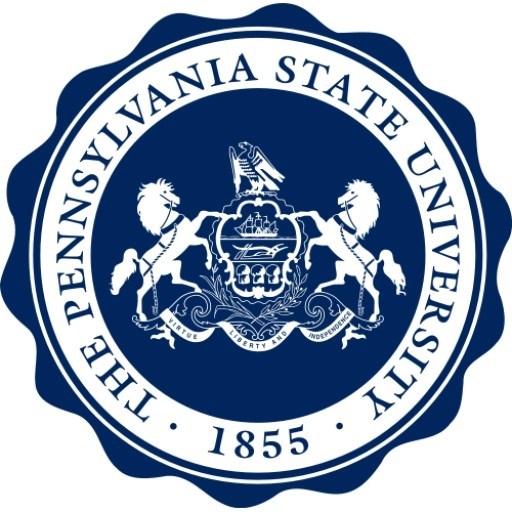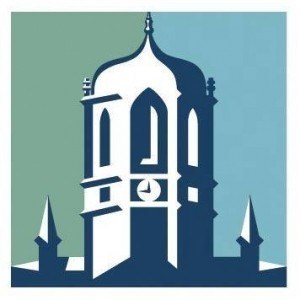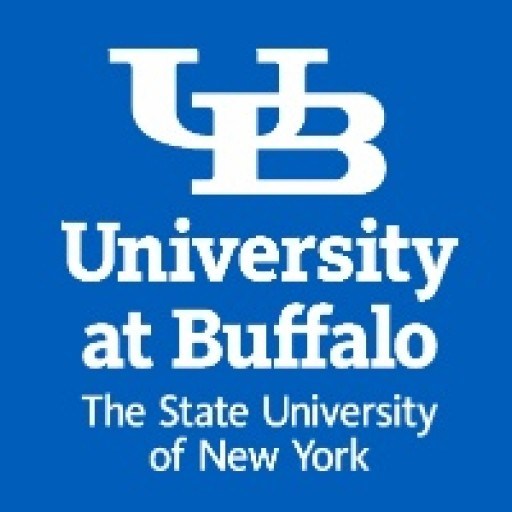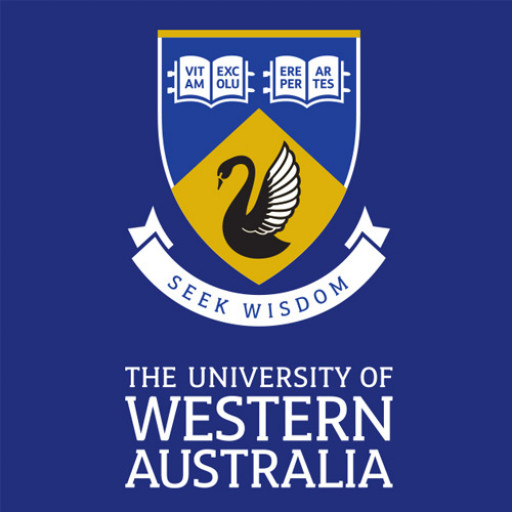Photos of university / #pennstate
The Anatomical Sciences program at The Pennsylvania State University offers a comprehensive undergraduate education focused on the structure and function of the human body. Designed for students interested in pursuing careers in health sciences, medicine, biomedical research, or related fields, this program provides a strong foundation in human anatomy, histology, physiology, and related disciplines. Students will engage in both classroom instruction and hands-on laboratory experiences, enabling them to develop a detailed understanding of human gross anatomy and microscopic anatomy. The curriculum covers a wide range of topics, including skeletal, muscular, nervous, cardiovascular, respiratory, digestive, and reproductive systems, preparing students for advanced studies or professional practice.
Throughout the program, students have opportunities to participate in research projects, internships, and practical dissections, which enhance their understanding of human anatomical variation and clinical applications. The program emphasizes critical thinking, problem-solving, and the application of anatomical knowledge in medical and healthcare settings. Faculty members are experts in the field of anatomical sciences, offering mentorship and guidance to support students’ academic and career goals. Graduates of the program are well-positioned to continue their education in professional schools such as medicine, dentistry, veterinary medicine, and allied health professions, or to pursue research careers in academic, governmental, or private sector institutions.
The Pennsylvania State University’s Anatomical Sciences program is designed to meet the educational needs of students seeking a rigorous and thorough understanding of human anatomy, providing them with essential knowledge and skills for their future endeavors in healthcare, research, and education. The program emphasizes a combination of theoretical learning and practical application, ensuring that students are well-prepared to contribute effectively to advancing health sciences and improving patient care. With state-of-the-art laboratories, experienced faculty, and a supportive academic community, students gain valuable insights into the complex structures of the human body and their relevance to health and disease.
The PhD program in Anatomy at Penn State University College of Medicine is designed for those interested in advanced training in human anatomical sciences.
The doctoral degree provides the resources and specialty training in human structure and medical sciences for students who want to pursue an academic career in the biomedical sciences.
Doctoral students have the opportunity to acquire disciplinary methods and techniques in any biomedical science field, including those basic, clinical or translational in nature, with the intent of using this knowledge to apply to new creative research, to demonstrate analytical thinking within the discipline, and to communicate their discipline-specific knowledge to others.
Doctoral degree students have the opportunity to rotate in 3 or 4 laboratories during the first two semesters with the intent of learning different methodologies, disciplines, and laboratory experiences before beginning more intensive research, thus encouraging interdisciplinary research and collaboration.
Coursework
During the first year of the Anatomy Graduate Program, incoming students focus on required anatomical courses, including Human Gross Anatomy, Human Embryology, Human Microscopic Anatomy (histology), and Human Neurobiology.
During the second year, students complete 6 credits of requisite graduate core curriculum, electives, research-related activities and professional development courses. Upper-class anatomy students have a unique opportunity to be involved in teaching gross anatomy to physician assistant and medical students, and advanced gross anatomy to residents and/or clinicians.
Required Courses
- ANAT 503 Human Gross Anatomy
- ANAT 512 Human Embryology
- ANAT 505 Microscopic Anatomy I
- ANAT 506 Microscopic Anatomy II
- NEURO 511 Human Neurobiology
- BMS 502 Cell and Systems Biology
- BMS 503 Flow of Cellular Information
- ANAT 602 Mentored Teaching
- Ethics (1 credit)
- Electives
Research
Doctoral degree students have the opportunity to rotate in 3 to 4 Anatomy faculty laboratories over the first 2 semesters, with the intent of learning different methodologies, disciplines, and experiencing laboratory personnel dynamics.
Following the candidacy examination, a doctoral student selects a laboratory with the permission of the principal investigator, and begins more intensive research.
In consultation with their advisor, the student begins the process of forming a thesis committee.
This committee must be approved by the Program Director prior to its formal appointment by the Graduate Program at University Park.
Students are required to present evidence of their research progress annually, to meet with their committee at least once annually, and to share written observations on the progress of their work that are documented by the advisor, and program director.
At the end of the second academic year, the written and oral comprehensive exams are administered.
Teaching
Teaching is a significant and unique component of the Anatomy Graduate Program.
Beginning in the second year, qualified graduate students may participate in the medical curriculum, the Human Gross Anatomy course for medical students.
While the graduate council does not permit teaching to an equal rank, involvement in the medical curriculum is permitted.
Students are involved in the course, particularly in the laboratory sessions and laboratory exams.
Exceptional students may be asked to provide tutoring, review sessions, and lectures.
These experiences are unique to this curriculum and provide an excellent opportunity for students to be engaged in higher education instruction.
Students are able to undertake this opportunity each year, and are compensated by the program providing a stipend for the 2 months of the class.
Academic Requirements
To be awarded a PhD degree in Anatomy, the student must successfully:
- Earn a total of 30 credit hours, of which at least 18 must be in 500- and 600-level courses. Students must maintain a B average (3.0) or better in academic courses to be retained in the program and to continue to receive financial support.
- Assist in teaching one of the laboratory courses: either Gross Anatomy or Neuroanatomy.
- Satisfactorily complete the following: (i) candidacy examination, and (ii) comprehensive examinations. Students must also demonstrate competency in the English language.
- Complete the ethics course.
- Complete an original research project, and orally defend, in a public forum, a written thesis describing the experimental design, results, and significance of the work.
Doctoral students must maintain a 3.0 (B) average to remain in good academic standing, and to be eligible for both the candidacy and comprehensive examinations.
In addition, doctoral students must complete all 15 credits of required anatomy courses with grades of B- or better.
The candidacy exam is usually taken after 2 semesters of didactic coursework, and the comprehensive exams are administered after 4 semesters, a time usually coinciding with the completion of coursework.
- Completed application form with personal statement of purpose
- Payment of the $65 application fee
- Official GRE or MCAT test scores - School Code 2660
- 3 letters of recommendation, uploaded through online application system by person writing the reference
- TOEFL score (if applicable) - School Code 2660
Scholarships
Assistantships
The most common form of graduate support, teaching and research assistantships, include a stipend, tuition remission, and a subsidy for medical insurance. Recipients are assigned to a faculty adviser who supervises the experience. Graduate assistants support undergraduate instruction or undertake research projects. A specified time commitment of 10-30 hours per week is required depending on the unit (a half-time/20 hour per week commitment is typical). Appointments are available only to graduate students who are registered for courses and enrolled in degree programs.
Fellowships
Fellowships are highly prestigious financial support packages that typically include a stipend, tuition remission, and a subsidy for medical insurance. They derive from University or outside awards. Unlike assistantships, they do not have a required work commitment; they are duty-free. Recipients must be enrolled in degree programs and be registered full time. Fellowship recipients are not permitted to accept employment without obtaining approval from the unit and/or agency supporting the fellowship.
Traineeships
Training grants are derived from agencies outside the University and are intended to support specific student learning experiences in core curricular areas and research methods. Institutional awards, typically under the direction of a faculty principal investigator, afford funding to support selected students with stipends, tuition grants-in-aid, and often include a subsidy for medical insurance.
Other Funding Sources
A half-time research assistantship (with tuition remission) is provided for all semesters for doctoral degree students in good academic and research standing.
The graduate program provides the stipend (and tuition) for two or three semesters, depending on fund availability, and the research mentor or associated department provide support thereafter.
The Anatomy Graduate Program reimburses the mentor for time that the student is involved in teaching activities.
The current stipend is valued at $26,982 for 2016-17, plus tuition remission.
The Pennsylvania State University offers comprehensive programs in Anatomical Sciences designed to prepare students for careers in healthcare, research, and education. The Department of Anatomy at Penn State provides undergraduate, graduate, and professional development opportunities focused on human anatomy, neuroanatomy, and related biomedical sciences. Students engaged in these programs gain in-depth knowledge of human body structure, function, and organization through a combination of classroom instruction, laboratory work, and innovative teaching methods. The curriculum covers various aspects of gross anatomy, histology, embryology, and clinical correlations, equipping students with the skills necessary for medical, dental, veterinary, and other health-related fields.
The program emphasizes hands-on learning with access to advanced dissection labs, imaging techniques, and digital resources, fostering a practical understanding of human anatomy critical for future healthcare practitioners. The faculty comprises leading experts in the field, dedicated to research, education, and mentorship. Opportunities for interdisciplinary collaboration are also available, integrating concepts from physiology, pathology, and biomedical sciences to provide a well-rounded educational experience.
Graduate students may pursue specialized research projects under faculty supervision, contributing to advancements in anatomical sciences and related medical fields. The program additionally prepares students for admission to professional schools or for careers in medical research, teaching, or healthcare administration. State-of-the-art facilities, research centers, and an active academic community support students throughout their educational journey.
Furthermore, Penn State’s Department of Anatomy collaborates with hospitals, clinics, and research institutions, providing students with real-world exposure and networking opportunities. The department also offers workshops, seminars, and conferences to keep students updated with the latest scientific discoveries and technological innovations in anatomy and biomedical sciences. Overall, the Anatomical Sciences program at Penn State aims to produce competent, skilled, and ethically responsible graduates who can contribute meaningfully to their professions and society.







